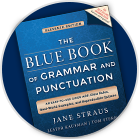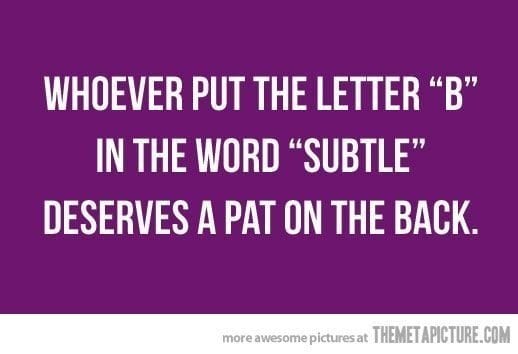Writing with Rhythm and Sound
|
|
Good writing involves more than good grammar. A sentence can be correctly written but dull. In addition to technical precision, composition that connects with readers has a sense of rhythm and sound.
Think of how much children enjoy rhymes and word play such as Red Rover, Red Rover, let Raymond come over and The itsy bitsy spider climbed up the waterspout / Down came the rain and washed the spider out.
As children become adults, they still respond to devices that give style to language. Consider how certain jingles and slogans create messages we remember, such as Alka-Seltzer's Plop plop, fizz fizz, oh what a relief it is.
The following are some of the techniques we might use to add rhythm and sound to our writing:
| • | Assonance: the repetition of vowel sounds in the same line (He walks on a wire above a personal mire; in this case, the rhyme further reinforces the sound) |
| • | Alliteration: the repetition of vowel or consonant sounds in the same line, typically at the beginning of words (Adam's apple, brisk breeze) |
| • | Consonance: the repetition of consonant sounds in the same line, including in the middle or at the end of words (She sells seashells by the seashore.) |
| • | Onomatopoeia: the imitation or representation of a natural sound (beep, clang, hiss). |
When used with skill, these devices can result in beautiful sentences such as Soft is the strain when Zephyr gently blows by poet Alexander Pope. Experts with them might even find work as advertising writers who can use assonance, alliteration, consonance, and onomatopoeia all in one short, catchy line like the one for Alka-Seltzer above.
Just as important, we want to avoid the jarring or distracting use of sound. Imagine a book or an article that includes a sentence such as She went to the station to see the map of the nations for a lively look at their frosty relations. We can agree that it's a bit too much.
Writing with rhythm and sound also involves where we place our words for emphasis. Note what the following two sentences emphasize and how they sound:
Believing in his message of hope, they followed him faithfully.
They followed him faithfully, believing in his message of hope.
In the first sentence, we stress the faithful following; we also end with a softer vowel sound (-ly), which is less resolute. In the second sentence, we underscore the message of hope; we also end with a single syllable with a consonant p sound, which is more resolute.
Yet another way to cast the sentence could be:
Believing in him, they followed faithfully his message of hope.
This treatment is perhaps the most succinct and rhythmic. In addition to looking more readable, it combines the two originally differing points of emphasis into one idea while ending in the stronger sound.
By focusing on rhythm and sound as much as we do grammatical accuracy, we can make ourselves writers who sing sweetly to readers' inner ears at the same time we write with precision.
|
View and comment on this
article on our website.
|
|
Free BONUS Quiz for You!
[[firstname]], because you are a subscriber to the newsletter, you get access to one of the Subscribers-Only Quizzes. Click here to take a Parallel Structure Quiz and get your scores and explanations instantly!
We will be adding many more quizzes this year to our already substantial list of quizzes. If you have suggestions for topics we have not yet covered, please send us a message at help@grammarbook.com.
|
Hundreds of Additional Quizzes
at Your Fingertips
Subscribe now to receive hundreds of additional English usage quizzes not found anywhere else!
Teachers and Employers
Save hours of valuable time! You may assign quizzes to your students and employees and have their scores tallied, organized, and reported to you! Let GrammarBook.com take the hassle out of teaching English!
"Fun to test my skills."
"The explanations really help ... thanks!"
"I can select the quizzes to assign to my students, and then the results are reported to me automatically!"
|

|
Don't need all the quizzes?
You can now purchase the same quizzes individually for ONLY 99¢ each.
Purchase yours here. |
If you think you have found an error in a quiz, please email us at help@grammarbook.com
|
 |
The Blue Book of Grammar and Punctuation
by Jane Straus, Lester Kaufman, and Tom Stern |
The Authority on English Grammar! Eleventh Edition Now Available
An indispensable tool for busy professionals, teachers, students, homeschool families, editors, writers, and proofreaders.
Available in print AND as an e-Book! Over 2,000 copies are purchased every month!
The publisher of The Blue Book, Jossey-Bass, A Wiley brand, is offering a 35 percent discount for those of you who order the book through Wiley.com. Shipping and tax are not included. Simply go to bit.ly/1996hkA and use discount code E9X4A.
Offer expires December 31, 2020.
|
Wordplay

|
 |
English In A Snap:
68 One-Minute English Usage Videos FREE |
Learn all about who and whom, affect and effect, subjects and verbs, adjectives and adverbs, commas, semicolons, quotation marks, and much more by just sitting back and enjoying these easy-to-follow lessons. Tell your colleagues (and boss), children, teachers, and friends. Click here to watch.
|
|





